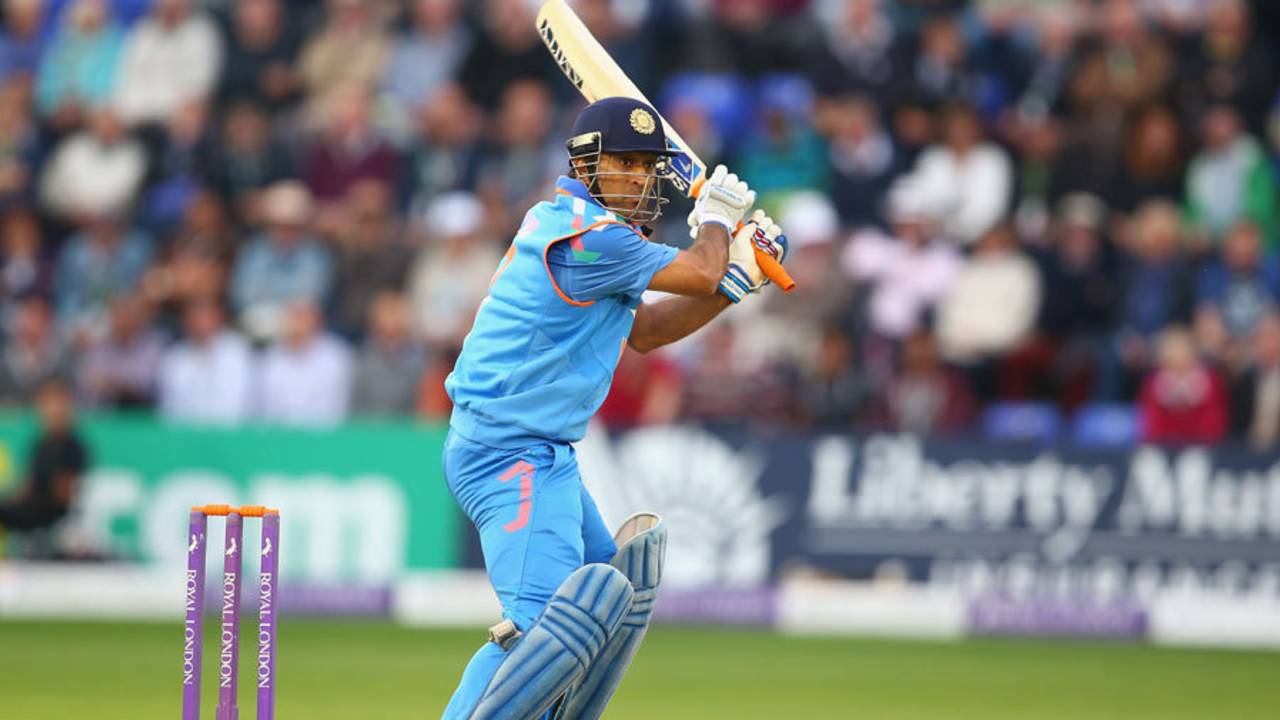MS Dhoni came in to bat at the end of what had been a fruitful partnership for India. Rohit Sharma and Suresh Raina had added 126 for the fourth wicket in 22.1 overs, setting them up for a big finish. This situation, 15 overs to go and six wickets in hand, is usually right up Dhoni's alley. With Rohit to give Dhoni company, you could even expect 150 from the last 15 overs. Even a more normal 115 would have taken India to 300. However, Dhoni began in circumspect manner, and managed only 19 off 31. India collapsed after that, and ended up with 267, which was about 30 below par on a flat MCG pitch. The match was lost in those last 15 overs.
When you look at it from Dhoni's point of view, though, that approach was the right approach, an approach he has been forced to adopt. India's Nos 7, 8 and 9 can be solid at times, stubborn when at their best, but they are not big hitters. Australia have James Faulkner, Sri Lanka have Thisara Perera, New Zealand have Luke Ronchi, but India can't rely on their lower order to hit the big runs. That got compounded ever since the new ODI rules have forced teams to play five bowlers.
All this has resulted in Dhoni's having to mix that caution and aggression because he knows he doesn't have impact finishers behind him. That flow that you want an innings to have at such times has eluded Dhoni of late. "That [caution] has been the case," Dhoni said. "It is not only in this game. That has been the case in the last four-five years at least. We have groomed [Ravindra] Jadeja to do that job. [R] Ashwin we all know can definitely bat. He is a good batsman but he is not someone who will clear big grounds. Overall that becomes slightly difficult.
"Once I go in to bat at No. 6, it becomes like you have to hit and you can't get out. It's a very difficult thing to match up. I feel with Jadeja coming back, whenever he becomes fit, it becomes slightly easy for us because we all know that he can also hit. You may bowl short-pitched deliveries to him but he is someone who can hit the ball. We feel a bit comfortable when he is around. Akshar [Patel] we all know he can definitely bat. Tomorrow he can be as good as Jadeja. With them, you can also have the option of playing two left-arm spinners if needed, depending on the opposition."
Jadeja has only just started to come good after months of grooming. His injury means Akshar has come in. Akshar is quite similar to Jadeja. He bowls darts, faster and flatter than Jadeja, which could help Dhoni establish control in the middle overs, and also use him in the death overs. Akshar performed those two acts to Dhoni's content in this game. His batting, though, is a bit like Jadeja's when he first came onto the scene, before he filled up and began to manage some big hits. Yet neither of them is in the league of the other big hitters batting in similar slots around the world.
"The fact that Jadeja is not here, we had to delay our slog by some extent," Dhoni said. "The reason being we know Akshar can bat, but this is the first time he is getting to bat outside the subcontinent. So we are not really sure. Hopefully with a bit more time if he gets into his groove, it will become slightly easy for us and we won't really have to delay our slog. Today we had to, the reason being we are not really sure."
On a day that Rohit Sharma scored a composed century to get closer to finally sealing the opening combination, India's bowlers got off to a poor start and the lack of big hitters towards the end stalled the momentum in the overs when India would have wanted to go big. India's ODI cricket away from home since they began playing in South Africa has been a jumbled-up string. India have been trying to sort it out, but the moment they find one end they realise they have lost the other. Onwards to finding a way around a new problem now.

